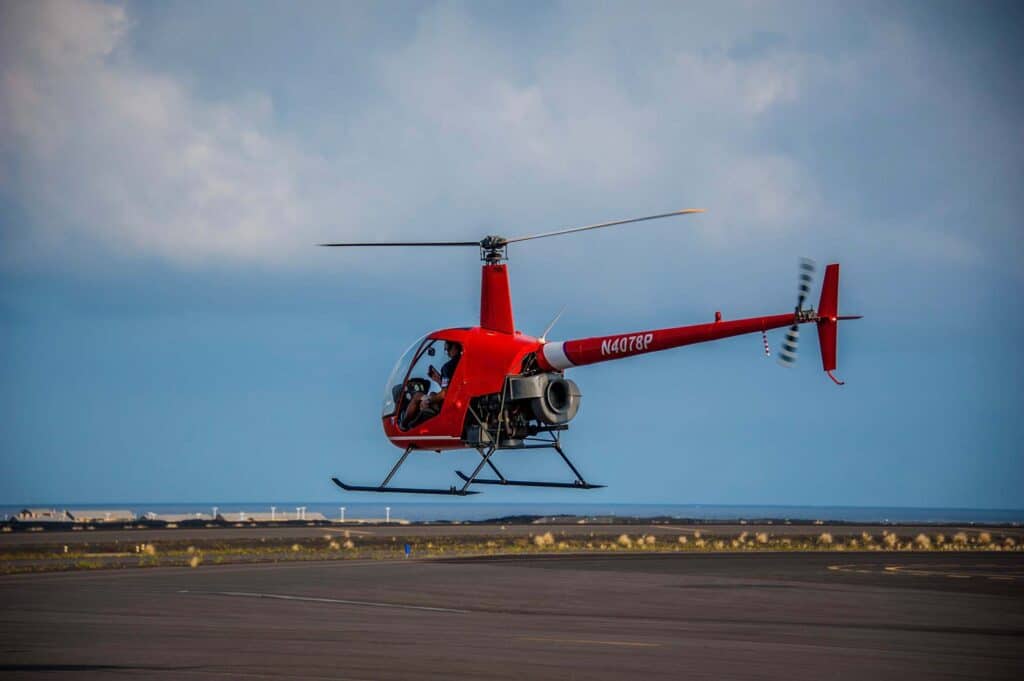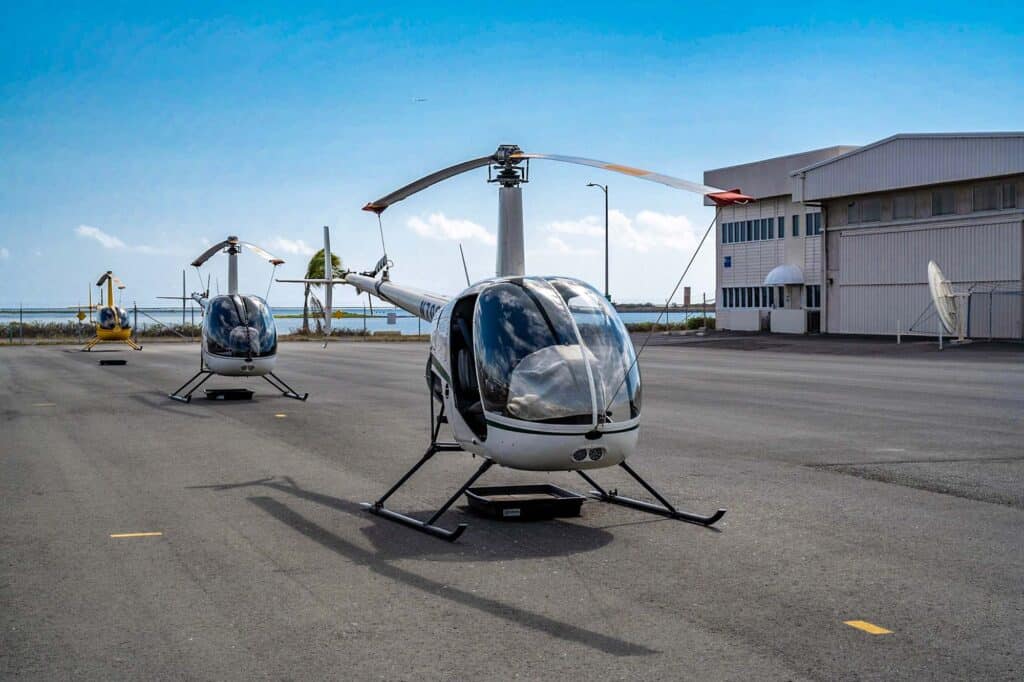Have you begun considering a career as a helicopter pilot? Many individuals contemplate this career path but often perceive it as too challenging to pursue. The primary question our admissions team receives is, “How do I begin?” So, let’s break down some of these queries and guide you through the steps to embark on a career as a helicopter pilot. Here we will outline our training program and highlight key factors to consider when entering the helicopter industry.
Few helicopter flight schools in the United States possess the experience and esteemed reputation that our flight school does. It is this extensive experience that provides us with valuable insights into not only helping individuals obtain their helicopter pilot ratings and certificates but also leveraging that knowledge to pursue a successful career in the helicopter industry.

First step considerations:
- Medical Requirements- You will need to obtain an FAA Medical Certificate to begin your flight training, you will also need to hold a medical certificate while working as a commercial pilot post-graduation. You find a medical examiner in your area by following this link: https://designee.faa.gov/designeeLocator.
- Training Dedication- We strongly suggest students train full-time, five days a week 12-18 hours a week. Active student training consistency aids in grasping concepts faster and maintaining momentum throughout your flight training. This will also help a student spend less on the overall cost, not needing to repeat flight/ground lessons.
- Funding- Flight training can be costly, and without a proper funding plan you may not succeed. Having your funding in place BEFORE you begin flight training will assist in less stress during your training.
- Schedule Flexibility- Unfortunately during flight training, you will experience unforeseen shifts due to weather, maintenance, etc. This is important to consider before applying.
Ok, you are in it to win it. Now what?
Apply- You will need to apply online, use this link once you are ready https://maunaloahelicopters.submittable.com/submit. You will need to fill out dedication questions as well as upload the required documents:
- Proof of Citizenship
- Proof of Education
- Financial Verification (international students only)
- English proficiency (Aptitude test is sent and scored to international students)
- FAA Medical
- Previous Flight Time (Flight Log)
Next, you will pay your enrollment fees this will be done via your application on Submittables. If you are a foreign student you will need to begin your TSA application and pay those fees separately.
You will receive an acceptance package from our school via email as well as in the mail. This packet will be enclosed with all the first-day steps for you as well as study preparation to make sure your first day of training is smooth.
You will be emailed your orientation date in date as well as who your instructor will be. If you are a Private pilot enrolling you will be given a cohort date. This first day is very important and attending is mandatory. During your orientation, you will meet your instructor, and our friendly office staff, learn about our scheduling systems, and review your student handbook.
And then, it’s time to start flying! You and your CFI will work on a schedule for your training that meets all the time requirements and gets you to your goals in the most efficient time frame.
Well now you are flight training, but what is expected?
The road to becoming a professional helicopter pilot is not an easy one, but a fulfilling one. Here is a detailed breakdown of the rating you will need to complete during our Professional Pilot Program.
- Private Pilot Certificate (PVT): Achieving you’re Private Pilot Certificate is the first step in building the required foundation of your career. The PVT rating is projected to take you three months (if training full-time), during these months you will acquire the necessary skills for conducting fundamental helicopter operations, cross-country navigation, radio protocols, airport and heliport procedures, as well as sound aeronautical decision-making. Upon demonstration mastery of these skills and exhibiting good judgment, you will undertake your inaugural solo flight in the helicopter, where you will be solely responsible for piloting the aircraft without an instructor onboard. This milestone marks a significant event in your aviation journey and is an experience that will remain memorable throughout your lifetime.
- Commercial Pilot Certificate (COMM): Unlike other flight schools, Mauna Loa Helicopters conducts our COMM rating after our PVT. The COMM certification enables you to earn compensation for your flight services as a helicopter pilot and refine your flying abilities in readiness for your initial commercial helicopter pilot position. Alongside mastering professional flying techniques, you will delve into advanced aerodynamics, commercial regulations, helicopter power management, and techniques for navigation pinnacles and confined spaces.
- Certified Flight Instructor Rating (CFI): For many pilots, the initial employment opportunity involves working as a flight instructor to accumulate the necessary flight hours mandated by commercial operators. In helicopter aviation, this typically entails amassing 1000-1500 total flight hours before qualifying for entry-level pilot roles. Throughout the CFI course, you will develop the skills to be an adept educator, enabling you to effectively instruct and assess your prospective students. You will gain expertise in delivering both grounds and flight instruction, while also learning to identify common student errors and methods for rectifying them.
- Instrument Rating (IFR): The IFR certificate focuses on mastering helicopter flight using instruments and is increasingly important in the helicopter industry as new aircraft capabilities are recognized. Obtaining this rating enables you to fly safely in conditions with limited visibility, while also learning advanced approached techniques, fundamental attitude flying principles, and procedures for instrument-based cross-country flights. The varied weather conditions prevalent in the Pacific Ocean, where our two bases are located provide an ideal environment for honing these instrument flying skills.
- Certified Flight Instructor Instrument Rating (CFII): To be hirable at MLH you will need to obtain your CFII. Acquiring this additional instructor rating broadens the scope of students a CFI can work with and accelerates the accumulation of flight hours.

Costs and Timeframe
Our Professional Pilot Program typically takes a full-time student 12-18 months to complete and graduate. Upon completion, each graduate will have 200 flight hours, this will allow you to instruct in the R22. Our syllabus also has built-in R44 time to help our students be hired by our school.
The average student completes the PPP spending about $98,000 for all five ratings and R44 time. Please note finish time and costs will vary depending on the students. We do have financing options for those who qualify. You can read more about this on our website or give us a call or email and someone from the admissions team can help you.
Location and Training
Located in the middle of the Pacific Ocean, Mauna Loa Helicopters is more than ideal for flight training. The R22 is renowned as an excellent training helicopter due to its responsiveness, safety, and reliability despite its compact size. This is why MLH operates all its flight training on the Robinson aircraft. Each training base has its on-site maintenance teams overseeing our fleet. The benefit of having our maintenance team ensures our aircraft our are in optimal flying condition, and they are available to address any queries students or instructors may have regarding the operation of specific aircraft models.
Flight training in Hawaii is a top choice for several reasons such as scenic beauty, diverse weather conditions, varied airspace, Island-hopping opportunities, cultural experiences, a large aviation community, and great career networking opportunities.
You graduated, what’s next?
Once you hold all five ratings (PVT/COMM/IRF/CFI/CFII) and 200 flight hours, you are eligible to be hired as a flight instructor. Mauna Loa Helicopters hires 90% of our graduates to work at our school. If not hired with MLH, we suggest you to other flight schools looking for new flight instructors. Most flight instructors with our school will instruct for about 500 hours, at this point we promote our top instructors to be tour pilots in our tour operation. Once our graduates have about 1,000 hours they move on to other commercial operations.
Tours, charters, and utility operations are typically the next big steps for pilots with 1,000+ hours. It is critical to keep in mind that the career progression we have listed are just examples. Each pilot will follow their path discovering a job or sector within the industry that you are passionate about and finding fulfilling. The helicopter industry is dynamic, constantly evolving with new applications like tree saw trimming. As industries increasingly recognize the versatility of helicopters, fresh new opportunities will keep emerging and shaping the industry’s future. To learn more about helicopter job possibilities, check out what our alumni are doing.

